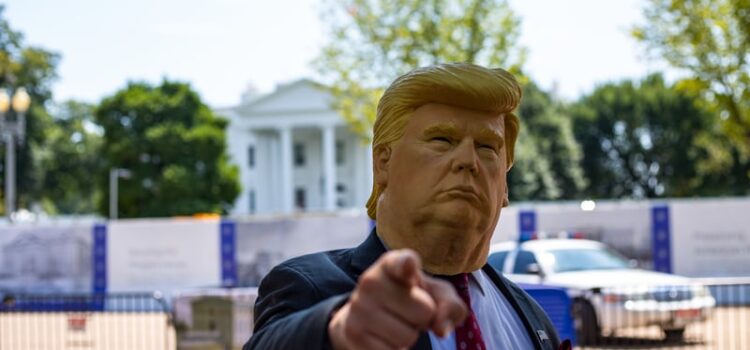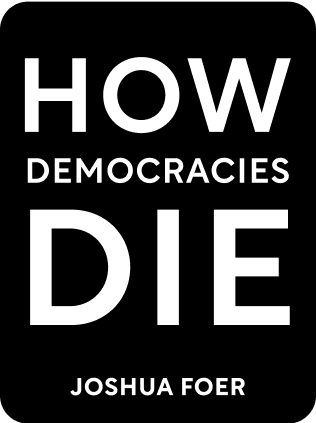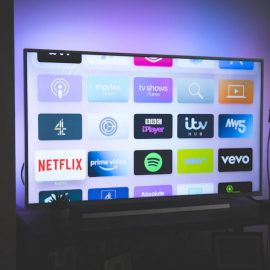

This article is an excerpt from the Shortform book guide to "How Democracies Die" by Steven Levitsky and Daniel Ziblatt. Shortform has the world's best summaries and analyses of books you should be reading.
Like this article? Sign up for a free trial here .
How did Donald Trump win the election when all odds were against him? What were the key factors that helped him secure the Republican nomination in June 2015?
When Trump launched his campaign for the Republican nomination in June 2015, he was a novelty candidate who stood little chance of actually winning. A total outsider to GOP politics, he had no close institutional ties to the party and seemed to lack even the most basic grounding in conservative ideology—not to mention his anti-immigration rhetoric that many leaders in the Republican Party considered to be extreme and outlandish.
Here is how political scientists Steven Levitsky and Daniel Ziblatt explain Donald Trump’s success in securing the nomination.
Donald Trump: Outsider Candidate
How did Donald Trump win the Republican nomination? In their book How Democracies Die, Levitsky and Ziblatt argue, Trump’s pre-existing celebrity as a real estate maven and reality television host of The Apprentice was his secret weapon in the primary—something that gave him near-universal name recognition among GOP primary voters and helped him promote himself as a successful, hard-nosed businessman with the skills to bring the nation to prosperity.
(Shortform note: Trump’s name recognition was truly exceptional, even at the very earliest stages of the primary contest. According to Gallup, by July 2015, just a month after announcing his candidacy, 92% of Republican voters reported being familiar with Trump—compared to 66% for Ted Cruz, 64% for Marco Rubio, and 35% for John Kasich.)
Media Dominance
Levitsky and Ziblatt also argue that Trump’s ability to dominate coverage on right-leaning media outlets like Fox News gave him a connection with Republican voters that was nearly impossible for party elites to break.
Although Trump had secured no major endorsements from leading party figures before the Iowa caucuses on February 1—and picked up hardly any even after winning early primaries and emerging as a clear frontrunner—the lack of endorsements turned out not to matter much at all.
Levitsky and Ziblatt rate the assets Trump did have as far more valuable than endorsements. For he had the loyalty of influential right-wing media figures like Sean Hannity, Ann Coulter, and the popular website Breitbart News. Combined with his high name recognition, this enabled him to communicate with his supporters directly, get his message out, and earn far more coverage than high-profile endorsements or campaign donations ever could.
| The Trump-Fox News Connection Although Levitsky and Ziblatt don’t devote much space to the subject, this symbiotic relationship between Trump and the conservative media ecosystem became a defining feature of his presidency as well as his candidacy. Popular hosts on right-leaning Fox News—like Sean Hannity, who spoke at Trump rallies during the president’s 2020 reelection bid—went on to become open surrogates for President Trump. Fox News also shaped Trump’s presidential rhetoric and was a major force in guiding the Trump administration’s policy actions. Stories on Fox—like the alleged “caravan” of migrants headed to the U.S. southern border in fall 2018 or the debunked conspiracy theory that the Democratic National Committee had had a staffer murdered—quickly found themselves amplified on Trump’s Twitter feed. As progressive journalist Brian Beutler argues in Hoax: Donald Trump, Fox News, and the Dangerous Distortion of Truth (2020), Trump even fired cabinet secretaries on the basis of attacks by Fox News hosts. |
But, argue Levitsky and Ziblatt, it wasn’t just conservative media that boosted Trump. He also excelled at generating enormous quantities of free coverage in the mainstream media. He achieved this thanks to 1) being a major celebrity before he launched his campaign and 2) generating controversy—and thus, coverage—through outlandish and extreme statements. In effect, the media system rewarded him for his extremism. Levitsky and Ziblatt cite one study done after the election that showed that Trump’s antics generated approximately $2 billion worth of free media coverage—something that all the endorsements in the world couldn’t buy.
| The Power of Free Media Levitsky and Ziblatt point to Trump’s success in garnering free media, but it’s important to flesh out their argument and put his performance in context with that of his Republican rivals. The data appears to show that free media coverage (which, unlike campaign ads, isn’t purchased directly by the campaign) was the most important asset in securing the nomination. Through February 2016, Trump’s paid advertising spending paled in comparison to that of ultimately ill-fated candidates like Jeb Bush and Marco Rubio—who spent $82 and $55 million on paid ads to Trump’s comparatively minuscule $10 million during the same period. But he earned free media coverage estimated at approximately $2 billion—nearly 10 times the $214 million worth of free coverage earned by his closest rival, Jeb Bush. |
Constrained by Nomination Rules
Thus, boosted by name recognition and an uncanny ability to generate media coverage through extreme statements, Trump emerged as the clear frontrunner for the nomination, to the shock of many GOP insiders. Levitsky and Ziblatt do note that some party activists organized plots to change the rules at the convention to “unbind” delegates and let even those pledged to Trump (by virtue of him having won primaries in their states) vote instead for another candidate on the first ballot.
(Shortform note: For example, some conservative groups like the Our Principles PAC attempted to lobby the 168 members of the Republican National Committee to deny Trump the nomination in advance of the convention and even ran anti-Trump television advertisements in key primary states.)
But, as Levitsky and Ziblatt argue, these plans had little institutional backing from within the party and ultimately had little impact on events. The authors argue that this failure can be attributed to the fact that the rules of the nomination process made it impossible to deny Trump the nomination once he’d secured a majority of pledged delegates. These Trump delegates were bound by party rules to vote at the convention for the candidate who won their states’ primaries—Donald Trump.
In a previous era, Levitsky and Ziblatt argue, party leaders might have been able to successfully organize an effort to block Trump. But by 2016, it was primary voters, media figures, and celebrity candidates like Trump who held the real power. GOP voters, with whom Trump was already enormously popular, had overwhelmingly chosen him as the nominee and party leaders lacked any politically realistic mechanism to stop him.
| The “Nuclear Option” The authors don’t note that some delegates at the party convention were bound by state law (not just party rules) to support Trump at the convention by virtue of him having won their states’ primaries. Thus, Trump’s nomination can’t entirely be blamed on what they present as the fecklessness of the Republican Party. Still, Trump might have been stopped at the 2016 Republican National Convention. Some commentators pointed out that a majority of delegates could choose to exercise the so-called “nuclear option” by changing the rules on the floor to allow them to vote for the candidate of their choice, rather than the one to whom they were bound by primary voters. Since many pledged delegates were state and local party officials who were not necessarily personally loyal to Trump, some argued that the real estate mogul could have been defeated if the delegates were free to vote their conscience at the convention. Notably, 2016 was not the first time such a course of action was considered. At the 1980 Democratic National Convention, challenger Ted Kennedy attempted to block the re-nomination of incumbent President Jimmy Carter by having his delegates force a floor vote on exactly this kind of rule change. The Kennedy and Carter campaigns each launched furious lobbying efforts to convince delegates to support the rule change (in Kennedy’s case) or oppose it (in Carter’s case). Kennedy’s effort ultimately failed and Carter was re-nominated. |

———End of Preview———
Like what you just read? Read the rest of the world's best book summary and analysis of Steven Levitsky and Daniel Ziblatt's "How Democracies Die" at Shortform .
Here's what you'll find in our full How Democracies Die summary :
- How shared norms are essential for preserving democracy
- Why the Trump presidency threatened those shared norms
- Why democracy goes beyond individual leaders and parties and must be a shared enterprise among committed individuals






